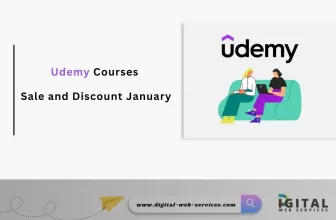
Education has moved online as the rest of the world has. The most recent technology has enabled access to massive amounts of data. This makes online and digital learning an appealing option for companies seeking to expand.
Businesses, institutions, and schools were pressured to relocate their work online during the pandemic. This revealed some of the difficulties associated with remote or classroom-less learning.
Businesses are eager to capitalize on the consequent improved digital learning experience in order to grow. However, before investing, it is critical to consider the benefits and drawbacks of online courses and digital education. Education has moved online as the rest of the world has. The most recent technology has enabled access to massive amounts of data. This makes online and digital learning an appealing prospect for businesses seeking to expand.
Opportunities of digital learning
It is more convenient for many businesses for learning to take place digitally. It requires little input from other employees and enables for advancement for all personnel. Here are some other ways that digital learning might assist your workforce and you can leverage from the digital learning opportunity
1. Recorded Lessons
One of the big.Opportunity of digital learning is that some of your classes will be recorded. Lessons that have been recorded ahead of time. This implies that each lesson can be revisited as many times as needed. This is ideal if a student has any questions or needs to review specific areas. As a result, an employee will have a more valuable experience.
2. Access on demand
Digital learning is incredibly adaptable. Courses are available 24 hours. This means that teachings can be tailored to diverse working habits inside a company.
3. Connected learning
Another .Opportunity of digital learning is that you will be a member of a linked community. If you need assistance with something, tools like Zoom and Microsoft Teams can connect you with your classmates so you can get the answers you need right away.
And, while your professors will still have a schedule of classes to teach throughout the day, You won’t have to wait until your next class with them to ask them questions thanks to instant messaging services and email.
Although they may not always be able to respond immediately, you will both have the opportunity to speak at times of the day that are convenient for you.
4. Digital experiences
Digital experiences are a combination of movies, content, questions, and even games. This style of training engages and captivates users, ensuring that the training is successful and enjoyable for the user.
5. Self-directed:
Self-directed learning is an essential component of higher education. It refers to the time spent learning outside of class when you are not being supervised by an instructor.
This time is critical because it allows you to discover your strengths and places where you may need to work a little harder.
Although you will still have plenty of touch with your lecturers when studying online, there will be occasions when you will have to make an active decision to study and choose what to focus on for yourself.
Taking care of your own education in this way can be quite powerful, and it may give you a sense of self-confidence that will help you do even better in the future. University-level coursework also includes a significant amount of self-directed learning, making it an excellent preparation for your degree.
The student can devote as much time as necessary to addressing their unique difficulties. They can also move on from a topic about which they are confident.
6. Flexible choices
We now have an abundance of technology at our disposal, which is especially true when it comes to digital learning – you’ll be able to mix and match the applications and software you use with various people and for different tasks.
Even though your teacher always uses Zoom to broadcast lectures, when working on a group project with your classmates, you’ll be able to experiment and find the mode of collaboration that works best for you, whether that’s Zoom, Slack, Microsoft Teams, or even WhatsApp!
7. Tracked progress
Digital learning not only assists you in identifying your skills and shortcomings, but it also allows your teachers to track your development. They will have an immediately available online record of all your efforts, as well as the ability to track your participation.
Your teacher, for example, will be able to notice if you attend all of your seminars but do not contribute to some of them. That could be because you are having difficulty with the material, and they will be able to reach out and offer assistance. They may even notice you have a problem before you do!
Challenges of digital learning
When compared to the traditional classroom approach, digital learning offers numerous. Opportunities to both teachers and students. Teaching and learning can occur whenever and wherever it is most convenient for everyone.
Of course, digital learning comes with its own set of challenges in addition to its benefits. Many students who perform well in a classroom setting will struggle in an online course. Even people who have mastered the content without difficulty can fall behind on tasks and fail examinations.
It is critical for teachers to be aware of these potential challenges. You can assist your students get the most out of each subject with a little foresight and planning.
1. Need for Self-Discipline
In a higher education classroom, many students struggle with self-discipline. It’s the first time kids haven’t had parents or teachers actively checking in with them. They are not grounded if they miss class to socialise. It may take some time for some people to acquire the innate drive to buckle down and complete the task. It’s even easier to “skip class” or put off an assignment in an online course.
Simply put, make it as plain as possible what students should be doing right now, how far they’ve come, and what’s coming up next. Calendars, reminders, and organizational tools can provide structure without being too intrusive.
2. Missing Social Interaction
College is an intrinsically social experience for many of us, as it is where we meet lifelong friends and even our future spouse. A physical classroom’s social energy can aid learning: there is active debate, people bouncing ideas off each other, establishing groups, and lifting each other up.
The in-person dynamic is difficult to replicate in an online course, but the feeling of group learning, cooperation, and socialisation can be replicated. Encourage pupils to introduce themselves and communicate with one another outside of class. Make a section for non-course-related chatting if you have a forum set up for the course.
3. Poor Time Management
This task is connected to the self-discipline challenge, but it warrants its own entry. One of the primary benefits of online learning is the ability for students to learn at their own speed. Although, that advantage can also be a disadvantage. There comes a time when “their own pace” becomes “procrastination and a mad dash at the conclusion of the semester.” It is critical to assist pupils in 2022.02.15″ managing their speed long before the deadlines.
It is important to allow for some flexibility in course progression while still providing structure. Set weekly or biweekly goals for student progress.
4. Technological Difficulties
We tend to assume that everyone has access to a modern laptop or desktop computer. Even within a generation of digital natives, though, not every student has had equal access to technology. Many people rely only on their smartphone or tablet for all of their internet activities. Some will have no access to broadband or Wi-Fi at all — all of their data will be provided by their phone service.
It is critical that course materials move away from the PC-centric model of the early 2000s. For the mobile-first generation, downloading files, printing pages, and even using Word documents may be outmoded. It is critical to select course materials that are simple to use on smartphones and tablets, as well as laptops and desktop computers.
Conclusion
Online learning has the potential to make education more accessible and easy for both teachers and students and Creating and selling courses online is a booming market now,but it is not without its drawbacks. It is critical to anticipate potential hurdles and provide pupils with the tools to overcome them.
By digitizing the learning experience, both students and teachers may develop their skills and create an active educational process.
Digital Web Services (DWS) is a leading IT company specializing in Software Development, Web Application Development, Website Designing, and Digital Marketing. Here are providing all kinds of services and solutions for the digital transformation of any business and website.










